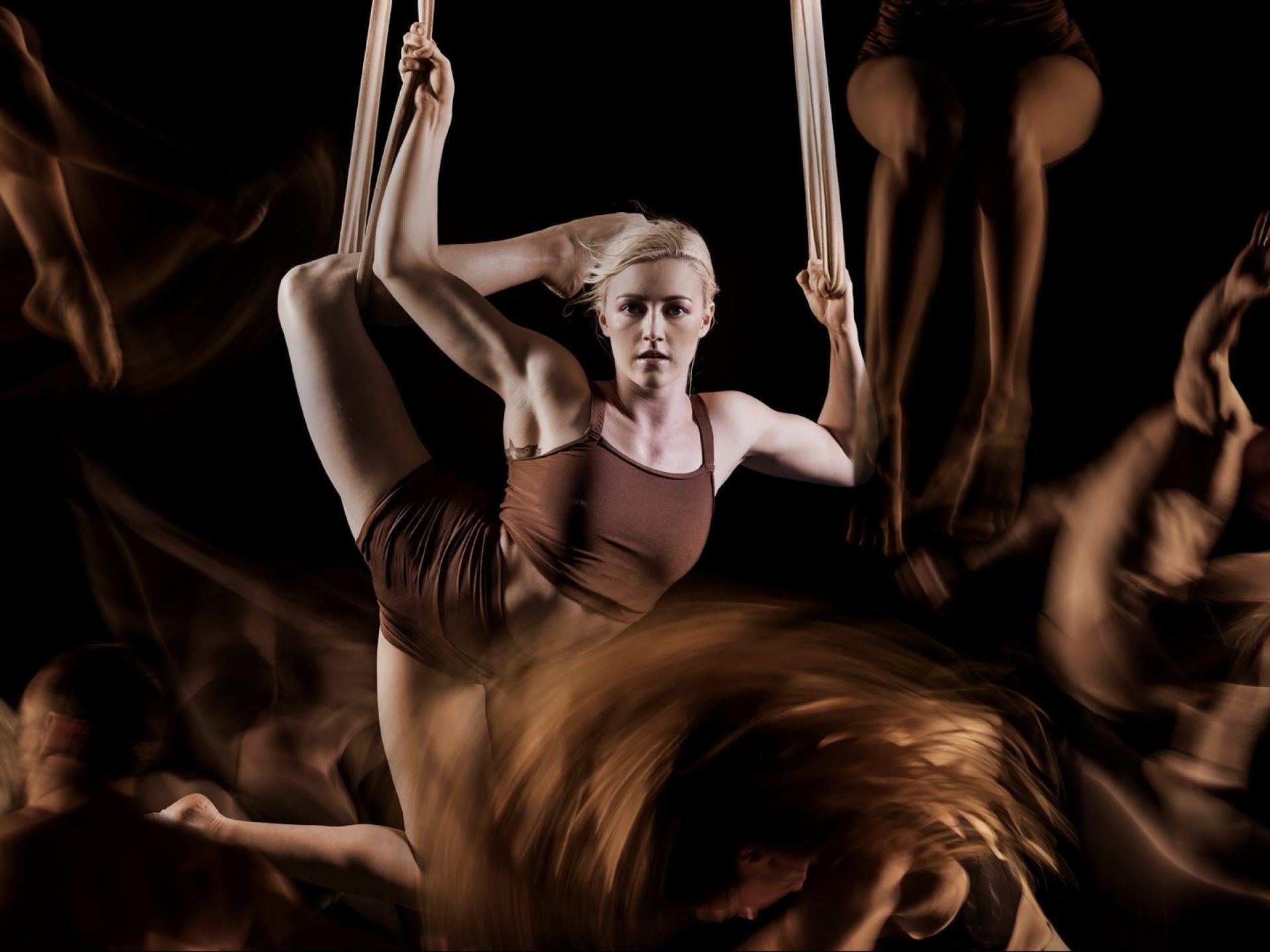January 27, 2020
The Gravity-Defying Acrobatic Troupe Who Are Redefining Circus

This article was originally published in Populous Magazine, our biannual publication featuring news and trends from the worlds of sport, entertainment, and major public events. Find out more, and sign up to receive a free copy, here.
They call it circus, but you won’t find lion-tamers, clowns or trapeze artists here. Circa, a contemporary circus troupe based in Australia and now touring internationally, specialises in immaculately choreographed group acrobatics. In stark contrast to the glitz and whimsy of traditional circus shows, the performances are raw and stripped back, marrying elements of gymnastics, contemporary dance, theatre, live music and visual storytelling.
“We try to make art out of circus,” says Yaron Lifschitz, the creative director. “We try to make work that is authentic; that speaks from the heart; that is artistically vigorous and fearless.”
The troupe was set up in Brisbane in 2004. Since then it has performed in 40-odd countries around the world to over a million people. It’s the way the acrobats combine their bodies which is so intriguing. In one of their shows, En Masse, an ensemble of six performers appears in monochrome dress on a bare stage, accompanied by two singers and four musicians.

The acrobats twist, contort and tumble across the performance space, coming together as intricate constellations, balancing on each other’s bodies, muscles quivering, one on top of another on top of another. For one of the moves, a single performer supports three others on his shoulders, one standing and the other two balanced in a precarious handstand, creating a reverse-pyramid formation. Another move sees a three-person-tall human tower come crashing down from a seemingly dangerous height. The acrobats roll skilfully as they hit the ground and spring away unhurt.
Even amongst professional acrobats, very few possess the levels of athleticism and theatrical artistry needed to make it as a Circa performer. “Our performers have to be able to move,” explains Lifschitz. “They have to be able to think and feel simultaneously. It’s not an easy job. Last season we put out a casting call and about 500 people responded. Out of all those, we’re still searching for the right two or three to work with.”
For the few that make the cut, the rehearsal process is gruelling. Circa’s performers train for six to eight hours a day, five or six days a week. A tour typically spans six months, with seven performances a week. “It’s hard work,” says Lifschitz. “We’re pretty good at managing the acrobats but there is definitely a risk with injury. We’re able to maximise the time they work for us because we’re careful with them; they’re very precious assets to us.”
Lorem ipsum dolor sit amet consectetur, adipisicing elit. Non facere corporis et expedita sit nam amet aut necessitatibus at dolore enim quis impedit eius libero, harum tempore laboriosam dolor cumque.
Lorem, ipsum dolor sit amet consectetur adipisicing elit. Illo temporibus vero veritatis eveniet, placeat dolorem sunt at provident tenetur omnis, dicta exercitationem. Expedita quod aspernatur molestias eum? Totam, incidunt quos.